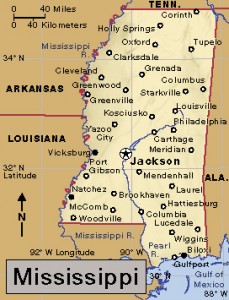Mississippi Statehood 200
December 8, 2017
Mississippi’s bicentenary takes place this Sunday, on Dec. 10, 2017. Throughout the year, bicentennial celebrations and local events commemorated Mississippi’s entrance to the Union as the 20th state in 1817. To mark the anniversary weekend in December 2017, two new museums opened to much fanfare in Jackson, the state capital: the Museum of Mississippi History and the Mississippi Civil Rights Museum.

Jackson is Mississippi’s capital and largest city. Known as the Crossroads of the South, it serves as a center of commerce, industry, and transportation. Credit: © John Elk III, Alamy Images
Mississippi has a long and sometimes troubled history. In the 1500’s and 1600’s, Spanish and French explorers encountered the Native Americans of the region—often with tragic results. The Mississippi area came under British control in 1763, Spanish control in 1781, and eventually American control in the mid-1780’s and early 1790’s. The Congress of the United States organized the Mississippi Territory in 1798, with Natchez as the capital. Winthrop Sargent became the first governor of the new territory. Adding bits of land at a time, the Mississippi Territory extended over all present-day Alabama and Mississippi by 1812.
In 1817, Congress carved Alabama from the Mississippi Territory, and on December 10, Mississippi became the 20th state. The first Mississippi state governor, David Holmes, had been territorial governor since 1809. The state capital bounced between Columbia, Natchez, and Washington until landing for good at Jackson in 1822.
Mississippi, a state that allowed slavery, seceded from the Union in 1861 and fought with the Confederacy during the American Civil War (1861-1865). Mississippi reentered the Union in 1870, but racial strife in the state continued for another 100 years.



